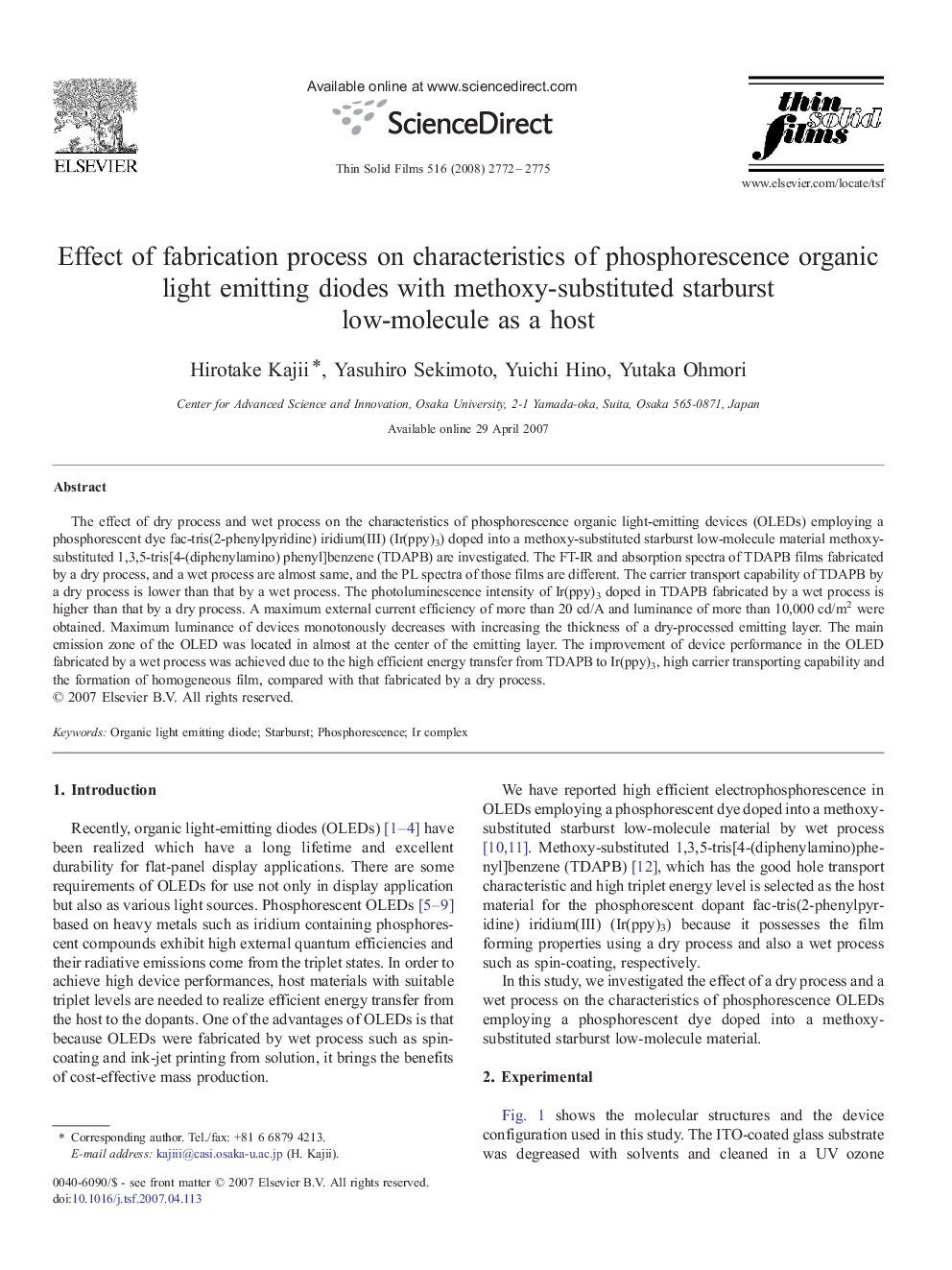| Article ID | Journal | Published Year | Pages | File Type |
|---|---|---|---|---|
| 1674132 | Thin Solid Films | 2008 | 4 Pages |
The effect of dry process and wet process on the characteristics of phosphorescence organic light-emitting devices (OLEDs) employing a phosphorescent dye fac-tris(2-phenylpyridine) iridium(III) (Ir(ppy)3) doped into a methoxy-substituted starburst low-molecule material methoxy-substituted 1,3,5-tris[4-(diphenylamino) phenyl]benzene (TDAPB) are investigated. The FT-IR and absorption spectra of TDAPB films fabricated by a dry process, and a wet process are almost same, and the PL spectra of those films are different. The carrier transport capability of TDAPB by a dry process is lower than that by a wet process. The photoluminescence intensity of Ir(ppy)3 doped in TDAPB fabricated by a wet process is higher than that by a dry process. A maximum external current efficiency of more than 20 cd/A and luminance of more than 10,000 cd/m2 were obtained. Maximum luminance of devices monotonously decreases with increasing the thickness of a dry-processed emitting layer. The main emission zone of the OLED was located in almost at the center of the emitting layer. The improvement of device performance in the OLED fabricated by a wet process was achieved due to the high efficient energy transfer from TDAPB to Ir(ppy)3, high carrier transporting capability and the formation of homogeneous film, compared with that fabricated by a dry process.
